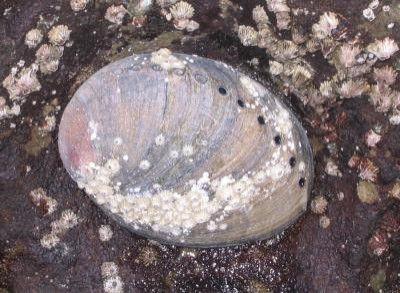California Shores Protected for Black Abalone; NOAA Designates Critical Habitat [MAP]

The federal government on Wednesday announced that it is now protecting 140 square miles of California shoreline for the endangered black abalone ? a type of shellfish once common in Southern California tide pools.
The National Oceanic and Atmospheric Administration (NOAA) Fisheries Service on Wednesday also filed with the Federal Register a final rule that is identifying black abalone as critical habitat along the California coast.
The federal government's decision to protect the California shores resulted from a lawsuit brought by the Center for Biological Diversity to force habitat protections for the shellfish. The petition to list black abalone as an endangered species occurred on Jan. 14, 2009 and a suit was filed March 23, 2010 asking the Fisheries Service to designate critical habitat.
According to the Center for Biological Diversity, the shellfish was once common in Southern California tide pools but has decreased by as much as 99 percent since the 1970s.
The growing severity of climate change is clearly stressing wildlife; black abalone's disappearance from the California coast is a warning sign, said Catherine Kilduff, a staff attorney at the Center for Biological Diversity. Recovery of black abalone requires today's habitat protections that consider activities causing climate change and ocean acidification.
Back in February 2009, black abalone was listed as endangered under the Endangered Species Act. That act required that critical habitat be designated whenever a species is listed for protection. When the area is designated as critical habitat federal projects or permits and projects with federal funding are mandatory to ensure their actions don't adversely modify the animal's habitat, according to NOAA.
However, designating critical habitat doesn't affect citizens engaged in activities on private land that don't involve a federal agency.
While fishing for black abalone is banned in the state, the Center for Biological Diversity issued a statement noting that it was historic overfishing that initially drove the animal's numbers down.
However, global warming is now intensifying the outbreak and spread of a disease called withering syndrome that has destroyed black abalone from the Southern California mainland and many areas of the Channel Islands.
The Center for Biological Diversity on Wednesday stated that ocean acidification threatens the black abalone's growth and reproduction. It also reduces the abundance of coralline algae, which is essential for young abalone settlement and survival. The center also noted that acidification has contributed to the collapse of oyster production in the Pacific Northwest and that there are new scientific studies documenting the sensitivity of abalone larvae to it.
Numerous threats besiege our coasts - ocean warming, acidification, pollution - and have pushed black abalone to the brink of extinction, Kilduff said. Today's decision will help them and help California's coastal ecosystems at the same time.
NOAA said black abalone once lived in intertidal waters from the northernmost reaches of California to the southern tip of the Baja peninsula in Mexico. This edible marine snail was harvested from the mid-1800s and peaked in the 1970s as a commercial fishery in California.
Now, the species is rarely found north of San Francisco or much farther south than the California-Mexico border, according to NOAA.
NOAA's Fisheries Service designated critical habitat for black abalone along the California coast to include rocky habitats and the coastal marine waters in the following areas:
-- From Del Mar Landing Ecological Reserve to Point Bonita.
-- From the southern point at the mouth of San Francisco Bay to Natural Bridges State Beach.
-- From Pacific Grove to Cayucos.
-- From Montaña de Oro State Park to just south of Government Point.
-- Palos Verdes Peninsula from the Palos Verdes/Torrance border to Los Angeles Harbor.
-- The circumference of: the Farallon Islands; Año Nuevo Island; San Miguel Island; Santa Rosa Island; Santa Cruz Island; Anacapa Island; Santa Barbara Island; and Santa Catalina Island.
NOAA's Fisheries Service has excluded the area of rocky habitat from Corona Del Mar State Beach to Dana Point from the designation. This is because the economic benefits of exclusion outweigh the benefits of inclusion and the exclusion won't result in the extinction of the species, according to NOAA.
It was also determined that San Clemente Island and San Nicolas Island were no longer eligible for designation because of the development of integrated natural resources management plans that provide benefits to black abalone, NOAA added.
Species with critical habitat protected under the Endangered Species Act are twice as likely to be recovering as those without, government data show.
The Center for Biological Diversity noted that safeguarding black abalone habitat means curbing climate change and ocean acidification. It added that the government must avoid destruction of the abalone's habitat by permitted activities such as projects with significant greenhouse gas emissions, coastal development, wastewater treatment, pesticide application and livestock operations on federal lands.
© Copyright IBTimes 2024. All rights reserved.






















